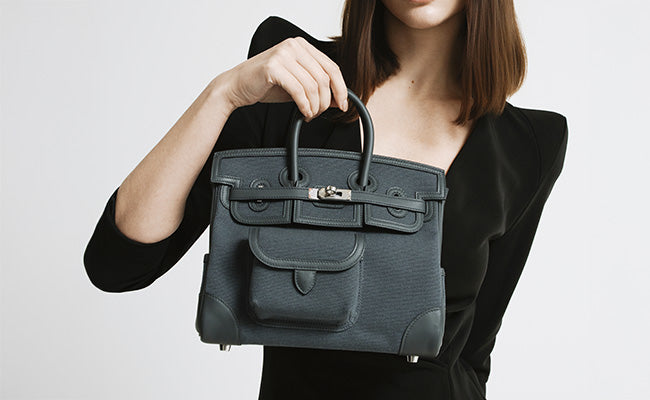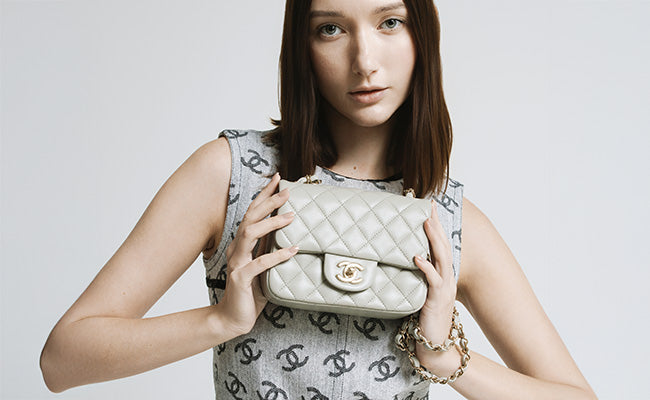
CAD vs. USD: Currency Timing and Hedging for Big Purchases
Check out our Hermès collection and Birkin bags!
So, you’re eyeing that $20,000 Birkin bag or planning a six-figure luxury car run to the States? Currency timing can make or break your wallet.
The Canadian dollar’s been scraping along near five-year lows against the USD, so our buying power for American luxury goods?
Not great. But, if you’re clever about currency hedging and timing, you could save thousands on high-end purchases, especially while the CAD’s this undervalued.
We’ve all felt the sting of a bad exchange rate when splurging on luxury priced in USD. That Hermès bag listed at $15,000 USD? Suddenly it’s $20,700 CAD at today’s rates. Ouch.
But here’s the thing: currency pros think the loonie might be due for a bounce, and there are smarter strategies out there than just waiting and hoping for a better rate.
Currency timing isn’t just for Bay Street types anymore. With some know-how about hedging, market signals, and timing, you can save real money on those dream purchases, while sidestepping some of the risk that comes with playing the currency game.
Key Takeaways
- Currency hedging can shield luxury buyers from nasty exchange rate moves when planning big USD purchases
- The Canadian dollar’s still undervalued vs. USD, so timing matters for large buys
- Knowing how currency exposure and hedging work helps you make smarter, less stressful foreign purchases
CAD vs. USD: Why Currency Timing Matters for High-End Purchases
If you’re set on that Birkin or considering a major luxury buy down south, exchange rates can add or subtract thousands from your bill. The Canadian dollar’s rollercoaster ride against the USD brings both risk and opportunity that any savvy shopper should at least be aware of.
How Currency Fluctuations Impact Luxury Buys
Exchange rates hit your wallet directly when buying luxury goods priced in USD. A 5% drop in the CAD? That $10,000 luxury buy just cost you $500 more.
Picture this: you’re looking at a $50,000 watch from a US dealer. Check out how currency moves change your cost:
| Exchange Rate | CAD Cost | Difference |
|---|---|---|
| 1.30 USD/CAD | $65,000 | Baseline |
| 1.35 USD/CAD | $67,500 | +$2,500 |
| 1.25 USD/CAD | $62,500 | -$2,500 |
Since October 2024, the Canadian dollar’s been sliding against the USD, blame trade policy drama and diverging interest rates. That means we’re shelling out more for the same luxury items.
Exchange rates can jump on a dime. Political news, inflation numbers, central bank chatter, these all trigger swings that hit your luxury shopping plans.
The Cost of Delayed Transactions in Volatile Markets
Drag your feet during a volatile market, and you might pay dearly. Hesitating on a luxury buy while the CAD’s weak? Every day can mean a bigger bill.
Right now, uncertainty’s high and the risk premium for the CAD has jumped, a big reason for its recent slide.
Investors have been upping their short bets in currency futures, bracing for more CAD weakness. That vibe, nervous, defensive, keeps pressure on our currency.
On big-ticket luxury buys (say, over $25,000), a week’s delay in a jumpy market can cost you hundreds, sometimes thousands. The risk’s even sharper for rare, limited-availability pieces.
If you’re serious about saving, keep an eye on USD/CAD moves and act when the rate swings your way. Nobody can time it perfectly, but understanding what’s moving the market helps you make smarter calls.
Understanding Currency Exposure and Hedging Fundamentals
That Birkin or Kelly bag you’ve been stalking? Currency swings can either be your friend or enemy. Currency exposure is a real risk on any cross-border luxury buy, but hedging can soften the blow from bad exchange rates.
What Is Currency Exposure for Discerning Shoppers?
Currency exposure is the risk that the CAD drops against foreign currencies before you close your luxury deal. Got a €50,000 Hermès on your wish list? A 5% CAD dip means you need $2,500 more, just like that.
The risk kicks in as soon as you decide to buy abroad, sticks around until you pay or protect yourself.
Where this bites:
- Designer bags in EUR or USD
- Swiss watches paid in CHF
- Art at international auctions
- Boutique reservations with foreign deposits
Timing matters a lot for luxury. Sometimes you order months ahead. That Birkin you ordered in January but don’t get until June? That’s six months of currency risk.
And it’s not just the sticker price. Currency moves can mess with your whole luxury budget.
Intro to Currency Hedging Techniques
Hedging is about locking in rates or capping your downside. You pay a little extra now to dodge a potentially massive loss later.
Forward contracts let you fix today’s rate for a future buy. Eyeing a €40,000 piece in three months? Lock in today’s EUR/CAD rate.
Currency options give you the right, but not the obligation, to exchange at a set rate. There’s an upfront premium, but if the rate moves your way, you can walk away.
Currency-hedged accounts manage the FX risk for you. Some private banks offer these for luxury buyers.
Hedging usually costs 1-3% of your transaction per year. On a $100,000 buy, that’s $1,000-$3,000, depending on timing and volatility.
Hedged vs. Unhedged Purchases: Key Differences
Unhedged? You ride the currency wave, good or bad. It works for impulse buys or if you’re feeling bold about the CAD.
Hedged? You get price certainty, but you might miss out if the CAD strengthens.
| Aspect | Unhedged | Hedged |
|---|---|---|
| Cost certainty | Variable | Fixed |
| Upside potential | Full benefit | Limited/none |
| Downside risk | Unlimited | Capped |
| Additional costs | None | Hedging premiums |
For luxury buys over $50,000, hedging often pays off. The peace of mind alone is worth the small premium.
It all comes down to your risk appetite and how long you have to wait. The longer the wait, the more hedging makes sense.
CAD Strength and USD Weakness: Identifying Market Timing Opportunities
Currency swings between the CAD and USD can open the door to big savings on luxury. The CAD’s shown some muscle lately, climbing from below 70 cents to about 73, while economic headlines keep stirring the pot.
Trends in Exchange Rates: CAD vs. USD
USD/CAD’s been anything but boring in 2024 and 2025. The loonie’s had rough patches, five-year lows, but it’s clawed back some ground.
Lately, the USD’s been losing steam after weak economic data, which has helped the CAD. That translates to better rates for Canadians buying in the US.
What’s moving the needle?
- Bank of Canada vs. Fed policy
- US inflation numbers
- Trade drama
- Oil prices (Canada’s oil-heavy, so this matters a lot)
The CAD tracks closely with Canadian stocks and commodities. Oil prices, especially, can make or break the loonie.
Some analysts are betting on more USD weakness. Technical charts show the USD/CAD pair looking oversold, and the longer-term trend seems to favour the CAD for big purchases.
Predicting Currency Movements for Major Luxury Purchases
Trying to time a Birkin buy? Watch for certain signals.
Keep an eye on:
- US jobs data (NFP reports)
- Fed decisions
- Bank of Canada rate moves
- Canadian inflation
Right now, USD/CAD charts show a descending triangle, usually hints at more USD weakness, which could help Canadian buyers.
Most forecasts expect the CAD to stay strong through 2025. The gap between Canadian and US rates is a big driver.
If you’re serious, the 1.3846 USD/CAD level is worth watching. If it drops below, the CAD could get even stronger.
Some professional forecasts see the CAD climbing further against the USD. That makes timing your luxury purchase extra relevant.
Strategic Hedging Options for Canadian Luxury Buyers
If you’re plotting a Hermès Kelly run or a Manhattan shopping spree, smart hedging can lock in your buying power. Investment managers have a few tricks to help you nail a good rate months before your big splurge.
Using Currency-Hedged ETFs for Large USD Outlays
Currency-hedged ETFs are a handy way to time luxury buys without rolling the dice on FX. They use forward contracts to kill currency risk while letting you ride the US market.
Take VTI (plain S&P 500 in USD) versus VSP (same thing, but hedged to CAD). For luxury buyers, this means you can build up your USD position over time, without sweating the exchange rate.
Why use them?
- Predictable CAD rates
- Pro management
- Cheaper than setting up your own forward contracts
On the flip side, if the USD tanks, you miss out on gains. And hedged ETFs usually charge 0.15-0.25% more in fees.
Choosing the Right Hedging Instruments
Forward contracts are the classic move for big luxury buys. Banks usually offer these starting at $25,000 CAD.
They let you lock in a rate 3-12 months ahead, perfect if you’re finally ready for that Patek Philippe.
Currency options are pricier but flexible. You pay for the right (not the obligation) to exchange at a set rate. Think of it as currency insurance.
Hedged ETFs shine if you’ve got a 2-6 month window and want someone else handling the details.
For smaller, quick-turnaround buys (under $25,000), just watching rates and timing your purchase often works out better than paying for formal hedging.
Risks and Rewards of Hedging Large Foreign Purchases
Hedging that dream Birkin or Hermès Kelly isn’t free, and it’s not always perfect. Sometimes it saves you a fortune. Other times, you end up paying for protection you didn’t need.
Hedging Costs and Imperfections
Let’s be real, hedging costs money. Forward contracts and currency ETFs all come with fees.
Here’s what to watch out for:
- Forward contract spreads (0.1-0.5%)
- Hedged ETF management fees
- Hidden bank product fees
Timing is tricky, too. If you’re buying a €15,000 Constance in six months, you need to nail your date. Miss it? You might have to unwind your hedge at the market rate.
Other headaches:
- Minimum contract sizes (often $50,000+)
- Penalties for early exits
- Hedge might not match your actual purchase perfectly
You rarely get a hedge that fits your needs exactly.
When Hedging Works (and When It Doesn't)
Hedging is a lifesaver when currencies tank. That €20,000 Birkin? If the loonie drops 10%, it’s suddenly €22,000 CAD.
It really pays off during currency meltdowns or big economic shocks. Remember 2020? The CAD got hammered, hedged buyers came out way ahead.
But hedging can backfire if:
- The CAD strengthens after you hedge
- Hedging costs eat your savings
- You cancel the purchase
The loonie’s 9% drop in 2024 made unhedged European buys painful. But if you hedge when the CAD’s strong, you might end up overpaying.
Best times to hedge:
- Big purchases (justifies the cost)
- Volatile markets
- Fixed timelines
For small luxury buys (under $10,000), hedging fees usually outweigh what you’d save.
Insights from Canadian Investors and Portfolio Managers
Canadian investors and private wealth managers have picked up some clever ways to handle foreign currency exposure, especially when planning for luxury buys or big investments. They tend to use tactical hedging and watch market signals closely, picking their moments based on what’s happening in the broader economy.
Real-World Approaches to Currency Timing
Plenty of Canadian investors keep a close eye on positioning data to time their currency moves. When speculative traders pile into record net short positions in CAD, like we're seeing now, seasoned investors often take it as a sign that sentiment can't get much worse. Usually, that's when currencies start to turn.
Key timing indicators:
- Interest rate gaps between Canada and the US
- Extreme positioning in currency markets
- Valuation data pointing to CAD being undervalued
- Trade tension headlines
Most investment pros don't go all-in at once. Instead, they start hedging bit by bit. Some started adding small USD hedges once USDCAD moved above 1.43, then planned to add more if the loonie got even weaker.
A lot of managers think CAD weakness at these levels creates contrarian opportunities. They're shifting some exposure back to CAD from USD, especially when the loonie hits five-year lows.
How Investment Managers Tackle Foreign Currency Exposure
Portfolio managers treat currency hedging as a strategic call, not just a roll of the dice. They know that skipping currency hedges is actually an active bet that can shape returns.
Fund managers have ramped up CAD-hedged product offerings, giving regular investors more control over their foreign currency exposure. That way, clients can keep their US equity exposure while shielding themselves from nasty currency surprises.
Common strategies:
- Tactical hedging when currencies get hammered
- Pairing Canadian equity positions with times when CAD looks strong
- Using currency-hedged ETFs for global investments
- Adjusting positions gradually, not just flipping a switch
Currency and asset risks don't always move together, so professionals focus on the overall net benefit to the portfolio. If the growth potential looks good, they're willing to eat the higher transaction costs that come with foreign currency exposure.
Frequently Asked Questions
Currency hedging and timing strategies matter a lot when we’re splurging on big-ticket luxury items abroad. The right move can save thousands, whether it’s for a designer handbag or a yacht.
How can I safeguard my investment when splurging on an overseas luxury spree?
Honestly, forward contracts are your friend here. Lock in those exchange rates 30-90 days before your planned purchase and you can dodge a lot of currency risk, especially when you’re dropping serious cash on luxury goods.
Hedging takes the guesswork out of exchange rates by matching exposures. For shopping trips, you could use currency-hedged investment accounts or set up forward purchase agreements.
Try to time your buys when the CAD's flexing some muscle against your destination currency. Keep tabs on economic news and central bank moves, they can swing rates before you even book your flight.
What's the chicest strategy for playing the forex market to snag an Hermès Birkin in Paris?
Keep an eye on the EUR/CAD exchange rate for a good 3-6 months before your Paris trip. Currencies have their own weird seasonal patterns, and savvy shoppers can use that to their advantage.
Set up alerts for when the Canadian dollar gets a bit of a lift against the euro. Even a tiny 2-3% move can mean hundreds saved on a Birkin.
Dynamic hedging lets you tweak your euro exposure as the market shifts. Hedge part of your EUR, but leave some open in case the CAD keeps climbing. Why not have your cake and eat it too?
When should a bon vivant hedge currency for that once-in-a-lifetime yacht purchase in the US?
If you’re eyeing a big USD purchase like a yacht, start hedging 6-12 months out. Yachts aren’t cheap, and currency swings on that kind of money can sting, a lot.
The USD has actually lost around 5% versus the CAD lately. That trend makes unhedged USD exposure risky for big-ticket buys.
Try partial hedging: protect yourself against major moves, but leave a little room for upside if the CAD gets even stronger. Forward contracts work well for locking in good rates on deposits and final payments.
Can timing the currency exchange elevate my jet-setting shopping escapades without cramping my style?
Absolutely. A 5% swing on a $50,000 spree? That’s $2,500, enough for a few extra treats.
Watch how currencies move with stocks and commodities. The CAD tends to rise with oil prices, so keep that in mind for your USD shopping plans.
Currency converter apps with alerts can help you catch a good window. Or keep a multi-currency account so you’re ready when the time feels right.
For my next high-flying European getaway, what currency tricks should be up our bespoke sleeve?
Consider using currency-hedged travel cards that lock in rates when you load them. That way, you’re not at the mercy of daily swings while you’re living it up in Europe.
Think about timing your big purchases to broader economic cycles. The euro often dips when the European Central Bank changes its tune, sometimes you can spot these moves coming.
Multi-currency investment accounts let you stash euros when the CAD is strong. Build up your European shopping fund during those windows, and you’ll thank yourself later.
Is there a vogueish way to predict currency fluctuations before we pamper ourselves with that Italian villa?
Honestly, predicting currency swings is tough, even the pros struggle with it. Instead of obsessing over nailing the perfect exchange rate, it’s probably wiser to keep risk management front and center.
You might want to keep an eye on economic stuff like inflation gaps, interest rates, and trade balances. I’d also suggest listening out for what the Bank of Canada and European Central Bank are saying; sometimes they drop hints about where things might be headed.
If you’re into charts, technical analysis on EUR/CAD can help spot support or resistance zones. Still, at the end of the day, big-picture economic trends tend to call the shots, especially for life decisions like buying that dreamy villa.




